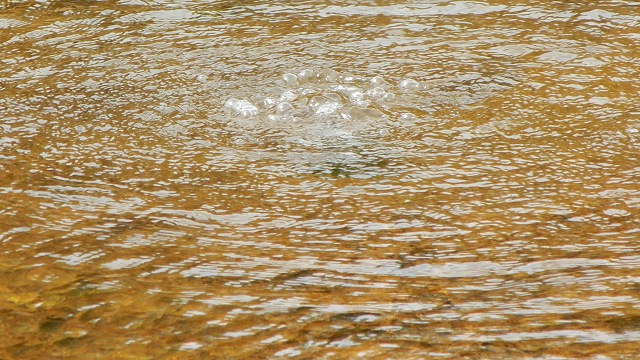
Here in the Bay Area, it's easy to find volcanic influences: Just visit one of our many hot springs, or Clear Lake, where I took this photo. These gassy springs that are bubbling with carbon dioxide are associated with young magma underneath the northern Coast Range. Many people believe that volcanic emissions of CO2 are a much greater influence on world climate than CO2 from human activities. Is that right?
The answer is no. It's a persistent delusion, similar to the idea that U.S. foreign aid is responsible for the national debt. Volcanoes erupt because of water vapor dissolved in lava. Volcanoes do release CO2, sometimes a great deal of it, but humans have been outdoing nature for a long time. Geoscientists have made many estimates of global volcanic CO2 production because it's one of those important numbers in the long-term, geologic carbon cycle. Plate tectonics carries buried carbon down into the deep Earth, and volcanoes burp it back up again.
At the global scale, the natural carbon cycle is slow and gentle, although the numbers may seem large: Volcanoes on land and under the sea release somewhere between 150 and 260 million tons of CO2 per year. However, human emissions of this greenhouse gas are around 35 billion-with-a-B tons a year when you add up burning oil and gas, manufacturing cement, running coal-fired power plants, and changes in land use like digging up soil and cutting down forests. We are a preposterously greater emitter of CO2 -- two orders of magnitude greater. And while volcanoes are pretty steady, humans are getting worse and worse.
Volcanologist Terry Gerlach, of the U.S. Geological Survey, has been publicizing this inconvenient truth. In a 2011 article in Eos, aimed at scientists, he puts the numbers in a geological context. If volcanoes had to match the human output, he says, it would require one or more Yellowstone-size supereruptions every year. Put another way, there would have to be ten Mount St. Helens eruptions every single day. (By the law of averages the U.S. would get one of these about once a week.) I say, lie back in your local hot spring and rejoice that CO2 emissions are a problem that human ingenuity and action can address.
Learn more about the basics of volcanic gases at Volcano World.
